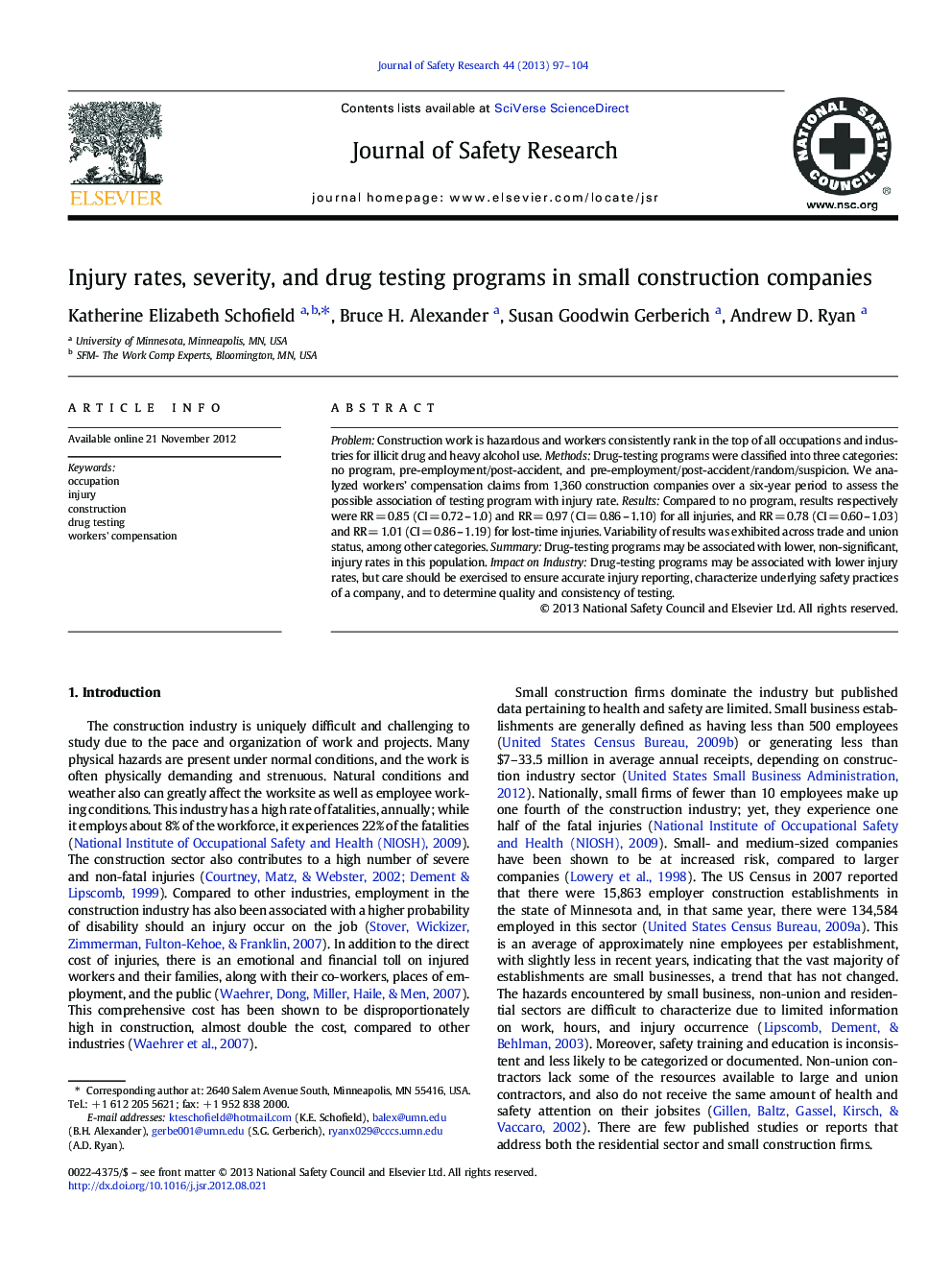| Article ID | Journal | Published Year | Pages | File Type |
|---|---|---|---|---|
| 587600 | Journal of Safety Research | 2013 | 8 Pages |
ProblemConstruction work is hazardous and workers consistently rank in the top of all occupations and industries for illicit drug and heavy alcohol use.MethodsDrug-testing programs were classified into three categories: no program, pre-employment/post-accident, and pre-employment/post-accident/random/suspicion. We analyzed workers’ compensation claims from 1,360 construction companies over a six-year period to assess the possible association of testing program with injury rate.ResultsCompared to no program, results respectively were RR = 0.85 (CI = 0.72 – 1.0) and RR = 0.97 (CI = 0.86 – 1.10) for all injuries, and RR = 0.78 (CI = 0.60 – 1.03) and RR = 1.01 (CI = 0.86 – 1.19) for lost-time injuries. Variability of results was exhibited across trade and union status, among other categories.SummaryDrug-testing programs may be associated with lower, non-significant, injury rates in this population.Impact on IndustryDrug-testing programs may be associated with lower injury rates, but care should be exercised to ensure accurate injury reporting, characterize underlying safety practices of a company, and to determine quality and consistency of testing.
► We examined the effect of drug testing programs on small construction companies. ► Workers’ compensation claims and hours at-risk were used to determine injury rates. ► Drug testing programs were associated with lower risk of injury claims. ► Testing programs were associated with lower risk of both lesser and more severe claims. ► Associations varied by testing program, trade, union status, and claim type.
